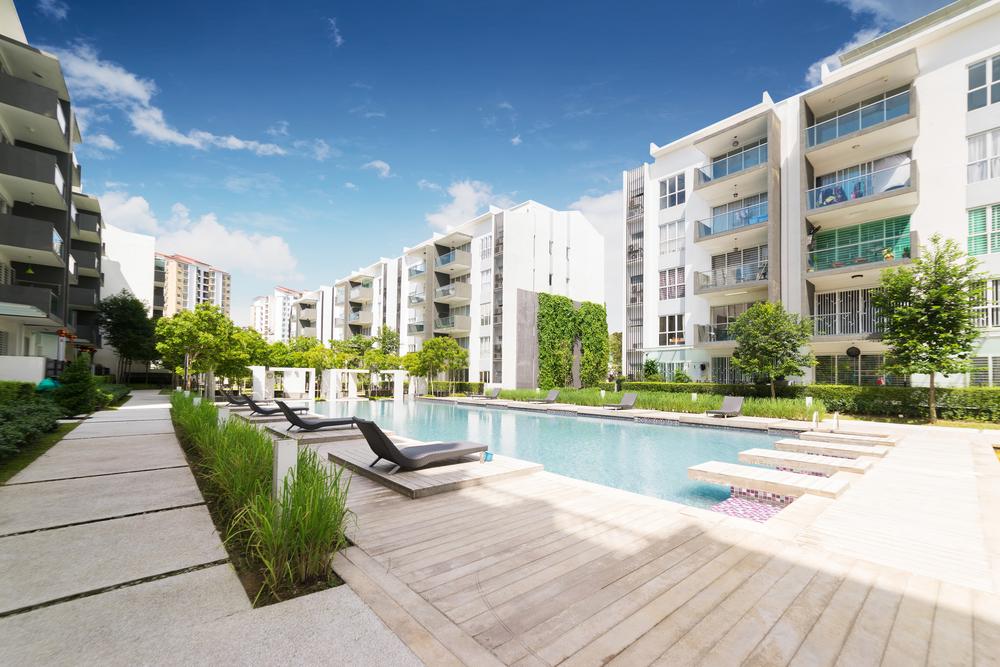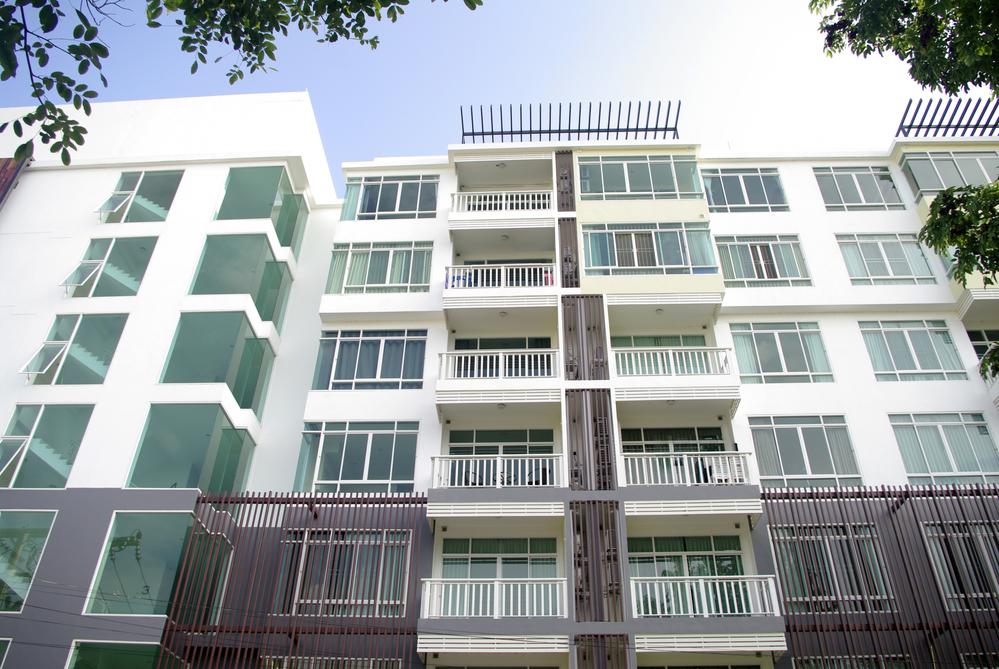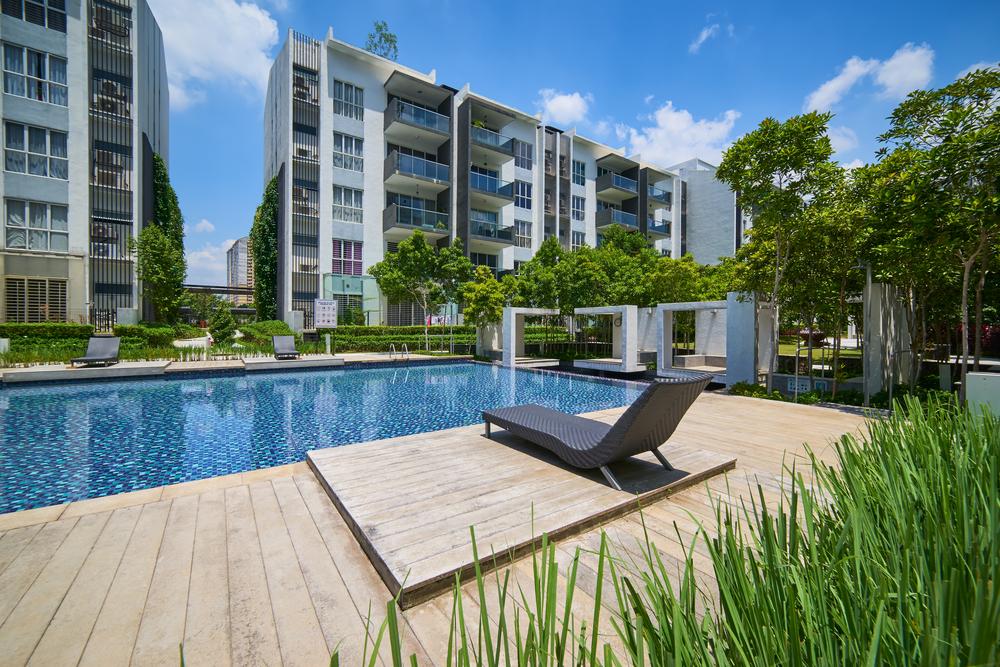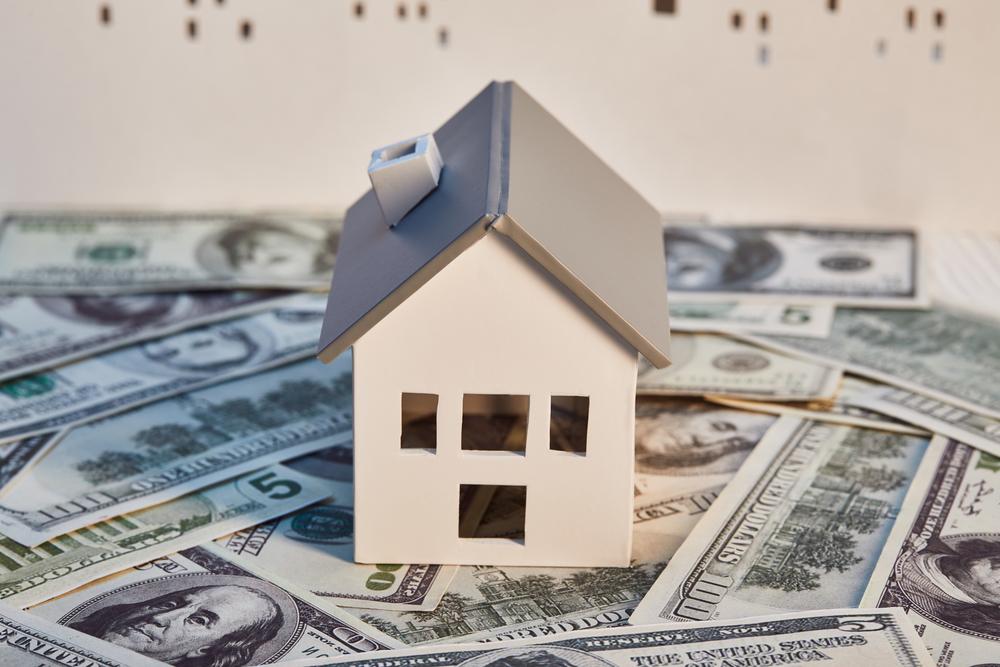Exploring Architectural Style Features in Grand Dunman
Welcome to the fascinating world of architectural styles in Grand Dunman, a city that artfully blends history, culture modern technology, and innovation. As we explore the captivating architectural style features that define the city’s buildings, prepare to embark on a journey through time, discovering architectural marvels from the classical era to the cutting-edge designs of modern sustainability.
Short Summary
- Grand Dunman’s architecture reflects its cultural heritage, historical context and technological advances.
- Modern architecture is characterized by clean lines, functionalism and the use of new materials & technologies.
- Biophilic design seeks to create a connection between humans & nature through natural elements in architecture.
Defining Architectural Style Features in Grand Dunman
Grand Dunman is renowned for its unique architectural style features, which are shaped by cultural influences, historical context, and technological advances. As we stroll through the streets of this magnificent city, we are greeted by a rich tapestry of styles, from the Beaux-Arts grandeur of the Grand Central Terminal to the charming pre-war shophouses along Koon Seng Road, reflecting the city’s diverse cultural heritage.
The city’s architecture not only tells a story about its past, but also showcases the innovative spirit of contemporary architects who have embraced modern materials and technologies to create structures that are both functional and aesthetically pleasing. In this exploration, we will delve into the key aspects that define Grand Dunman’s architectural styles, from the orderly symmetry of classical architecture to the playful irony of postmodernism.
Cultural Influences
Nestled within an area of abundant historical and cultural heritage, Grand Dunman’s architectural landscape is profoundly influenced by the diverse cultures that have shaped its history. One notable example is the presence of Peranakan culture, which has left an indelible mark on the city’s architecture, particularly in the pre-war shophouses that line Koon Seng Road.
These cultural influences not only add to the visual appeal of the city’s buildings, but also serve as a testament to the importance of preserving and celebrating the rich tapestry of traditions that have shaped the city and local people’s identity.
As we continue our journey through Grand Dunman’s architectural styles, we will witness the environmental impact of various cultural influences and their role in shaping the city’s unique architectural character.
Historical Context
In order to fully appreciate the diverse architectural styles present in Grand Dunman, it is essential to understand the historical context that has shaped its structures. The city’s history is founded upon a rich tapestry of architectural influences, from the classical order of ancient Greece to the Baroque grandeur that once dominated the city skylines of European countries during the British Empire.
Throughout its history, Grand Dunman has continually embraced new architectural styles, incorporating the structural elements and materials of bygone eras while adapting to present-day technological advancements. This amalgamation of historical influences and contemporary innovation has culminated in the creation of a city that seamlessly blends the past with the future, resulting in a unique architectural landscape that continues to evolve and inspire.
Technological Advances
Grand Dunman’s architecture also stands as a testament to the incredible technological advances that have been made in the field of building design and construction. The city’s structures showcase a range of modern materials and construction techniques, such as steel and concrete, that have allowed architects to push the boundaries of what is possible and create truly awe-inspiring edifices.
In addition to the use of innovative materials, Grand Dunman has incorporated energy-efficient design elements and embraced cutting-edge technologies like solar panels and smart home systems, which serve to minimize the city’s carbon footprint and contribute to a more sustainable and efficient living environment.
As we explore the various architectural styles present in the city, we will see the impact of these technological advances on the buildings and structures that define Grand Dunman.
Classical Architecture
Classical architecture, characterized by order and symmetry, geometry and proportions, has left an indelible mark on the architectural landscape of Grand Dunman. From the majestic columns of ancient Greece to the awe-inspiring domes of Rome, classical architecture has transcended time and inspired architects around the world.
Let us delve deeper into the key components of classical architecture and examine some of the finest examples of this enduring style.
Order and Symmetry
Order and symmetry are essential in classical architecture, generating a feeling of equilibrium, harmony, and logic that unifies the various components of a structure into a single, cohesive entity. By using curved lines and adhering to strict geometric rules and proportions, architects have been able to create a sense of balance and unity that not only pleases the eye but also reflects the underlying principles of nature itself.
Iconic examples of classical architecture, such as the Parthenon in Athens and the Pantheon in Rome, showcase the timeless appeal of these design principles and continue to inspire contemporary architects seeking to incorporate elements of the classical style into their own work.
As we move forward into the realm of modern architecture, we will see how the principles of order and symmetry have evolved to incorporate new materials and technologies, yet still remain firmly rooted in the classical tradition.
Geometry and Proportions
Geometry and proportions are integral to the art of classical architecture, providing a framework for the arrangement of architectural components and the overall composition of the building. By adhering to precise mathematical ratios and utilizing shapes such as the circle and the square, architects have been able to create a sense of harmony, balance, and elegance in their designs that resonates with the viewer on a deeply intuitive level.
The significance of geometry and proportions extends beyond the aesthetic realm, however, as they also play a crucial role in designing structural systems that ensure the stability of the building and its ability to withstand the forces of nature. By adhering to these fundamental principles, classical architects have been able to create structures that are not only visually stunning but also exceptionally resilient and enduring.
Iconic Examples
The enduring appeal of classical architecture can be witnessed in numerous iconic examples from around the world, such as the Parthenon in Athens, the Temple of Hephaestus, and the Erechtheion in Greece, as well as St. Peter’s Basilica in Rome, Italy. These ancient structures continue to captivate modern audiences with their timeless beauty, intricate craftsmanship, and unwavering adherence to the principles of order, symmetry, geometry, and proportions.
As we journey through the various architectural styles that have shaped the world, it becomes apparent that the legacy of classical architecture is deeply ingrained in the fabric of our built environment. Whether through the revival of classical styles during the Neoclassical period or the reinterpretation of classical principles by contemporary architects, the influence of classical architecture remains ever-present and continues to inspire new generations of architects and designers of new world.
Modern Architecture
In contrast to the timeless beauty of classical architecture, modern architecture emerged in the first half of the 20th century as a response to the rapidly changing world and the need for new, innovative approaches to design. Defined by the International Style, the Bauhaus Movement, and prominent modern architects like Le Corbusier and Mies van der Rohe, modern architecture is characterized by clean lines, functionalism, and the use of new materials and technologies.
Let us delve into the key aspects of modern architecture and examine how it has shaped the built environment of today.
International Style
The International Style emerged in the early 20th century as the epitome of modern architecture, characterized by rectangular structures, flat surfaces and roofs, a lack of ornamentation, and the use of glass, steel, and reinforced concrete as materials. This style sought to break away from the historical and decorative influences of the past and focus instead on the functional aspects of design, resulting in buildings that were sleek, streamlined, and distinctly modern.
Examples of the International Style can be seen in city skylines across the world, such as the Tokyo International Forum Glass Building, which beautifully embodies the functional emphasis and use of large, open spaces popularized by the movement.
As we continue to explore the various architectural styles present in Grand Dunman and beyond, we will see the enduring impact of the International Style on contemporary architecture and its continuing influence on the design of structures worldwide.
Bauhaus Movement
Another key aspect of modern architecture is the Bauhaus Movement, which was the first design school in the world and sought to revolutionize the way architecture and design were approached. Founded by Walter Gropius, the Bauhaus Movement prioritized functionality and the notion that the aesthetic beauty of a structure is derived from the simplicity and practicality of its design.
Gropius’ revolutionary teaching methods and the curriculum he developed at the Bauhaus school helped to advance the movement’s distinctive style of architecture, which can be seen in numerous modern buildings that prioritize function over form.
As we examine the various architectural styles that have shaped Grand Dunman, we will see the influence of the Bauhaus Movement and its emphasis on functional design and the use of modern materials and technologies.
Prominent Modern Architects
In addition to the International Style and the Bauhaus Movement, modern architecture is also defined by the work of prominent architects such as Frank Lloyd Wright, Frank Gehry, Le Corbusier, Mies van der Rohe, architect Zaha Hadid, and Louis Kahn. These architects have each made significant contributions to the field of modern architecture, developing their own distinctive styles and pushing the boundaries of what is possible through the use of innovative materials, technologies, and design principles.
For example, Frank Lloyd Wright is renowned for his Prairie School style, which emphasizes horizontal lines and a connection to the natural environment, while Frank Gehry is known for his Deconstructivist style, characterized by fragmented forms, unconventional materials, and a lack of symmetry.
As we explore the various architectural styles present in Grand Dunman, we will see the lasting impact of these prominent modern architects and their contributions to the evolution of architecture as we know it today.
Sustainable Architecture
As concerns about environmental sustainability continue to grow, a new approach to architecture has emerged that prioritizes the use of natural materials, energy efficiency, and innovative construction techniques to minimize the environmental impact of buildings: sustainable architecture.
In this section, we will explore the key components of sustainable architecture and examine how this approach to technology is shaping the built environment of the future.
Natural Materials
The use of natural materials is a cornerstone of sustainable architecture, as these materials often have a lower environmental impact than their synthetic counterparts and can contribute to the creation of healthier, more comfortable living spaces. Examples of sustainable materials used in various projects include timber and tuff rock in Grand Dunman, as well as locally reclaimed stone, weathered lumber, Atlantic White Cedar wood, green bamboo, eucalyptus poles, and jute.
By incorporating sustainable materials into their designs, architects can not only reduce the carbon footprint of their buildings, but also create structures that are more in harmony with the natural environment and the local context in which they are built.
As we continue to explore the various architectural styles and approaches present in Grand Dunman, we will see how the use of natural materials has shaped the city’s buildings and contributed to a more sustainable future.
Energy Efficiency
Energy efficiency is another key aspect of sustainable architecture, as it plays a crucial role in reducing the overall environmental impact of buildings and promoting a more sustainable way of life. Architects can achieve energy efficiency in their designs by incorporating elements such as energy-efficient facade systems, natural lighting, insulation, and the reuse of materials and structural elements.
For example, the West Side Residence is a sustainable project that saves a total of 72,000 kWh of electricity annually through its energy-efficient design. As we explore the various architectural styles and approaches present in Grand Dunman and beyond, we will see how the focus on energy efficiency is shaping the built environment and contributing to a more sustainable future for all.
Innovative Construction Techniques
In addition to the use of natural materials and a focus on energy efficiency, sustainable architecture also involves the implementation of innovative construction techniques that minimize the environmental impact of the building process. Examples of such techniques include the use of recycled construction waste and ground source heat pumps, which have been employed in projects such as the Grand Dunman development and Beck Farm.
By embracing these innovative construction techniques, architects and builders can create structures that not only minimize the environmental impact of their construction but also demonstrate a commitment to sustainable development and the creation of a more environmentally responsible built environment.
As we continue to explore the various architectural styles and approaches present in Grand Dunman, we will see how these innovative and sustainable construction techniques are shaping the city’s structures and contributing to a more sustainable future.
Postmodern Architecture
Postmodern architecture emerged in the late 1950s as a reaction against the austerity and formality of modern architecture and is characterized by a sophisticated use of forms, colors, and materials, as well as a repudiation of the strict functionalism of modernism.
This architectural style is known for its historical references, irony and humor, and incorporation of popular culture elements, which add a sense of whimsicality and playfulness to the design. In this section, we will delve into the key aspects of postmodern architecture and explore how it has shaped the built environment of Grand Dunman.
Historical References
Postmodern architecture is an eclectic blend of various styles small structures that incorporate elements from historical styles and motifs, such as classicism and popular culture, and responds to the urban context in which it is situated. This approach to design allows architects to challenge traditional architectural norms and create structures that are more accessible and engaging to the general public.
By incorporating historical references and allusions to popular culture, postmodern architecture not only adds a layer of visual interest to the built environment, but also serves as a bridge between the past and the present, allowing architects to create structures that resonate with contemporary audiences while still acknowledging the rich architectural heritage of the past.
As we continue our exploration of the various architectural styles present in Grand Dunman, we will see how postmodern architecture has shaped the city’s landscape and influenced the work of contemporary architects.
Irony and Humor
Irony and humor play a significant role in postmodern architecture, serving as both an aesthetic tool and a means of overturning conventional architectural norms. By incorporating elements of irony and humor into their designs, architects can create structures that not only challenge the viewer’s expectations, but also generate a sense of amusement and playfulness that sets postmodern architecture apart from more traditional styles.
The use makes sense of irony and humor in postmodern architecture can be seen in various forms, from the existential comedy of acknowledging the absurdity of life to the cultural satire of questioning traditional norms and conventions.
As we explore the various architectural styles and approaches present in Grand Dunman, we will see how the use of irony and humor has shaped the city’s buildings and contributed to the creation of a more engaging and dynamic built environment.
Popular Culture
Popular culture plays a crucial role in postmodern architecture, with architects frequently incorporating elements of popular culture into their designs to create a sense of familiarity and accessibility for the general public. This approach to design allows architects to break away from the traditional constraints of architectural style and create structures that are more engaging, playful, and reflective of contemporary society.
Examples of popular culture elements used in postmodern architecture include the incorporation of industrial materials such as steel, concrete, and glass, as well as pop culture imagery like comic book characters, movie posters, and graffiti.
As we continue our exploration of the various architectural styles and approaches present in Grand Dunman, we will see how the use of popular culture elements has shaped the city’s buildings and contributed to the creation of a more vibrant and engaging built environment.
Biophilic Design
In recent years, there has been a growing interest in biophilic design, an approach to architecture that seeks to create a connection to nature through the use of natural elements such as plants, water, and sunlight. This design philosophy is based on the idea that humans have an innate connection to nature that can be enhanced through the built environment, resulting in spaces that promote well-being and a sense of harmony with the natural world.
In this section, we will explore the key aspects of biophilic design and examine how it is shaping the future of architecture.
Connection to Nature
The connection to nature is a critical element of biophilic design, as it helps to foster a sense of harmony and balance between individuals and the environment. By incorporating elements of nature into the design of buildings and spaces, architects can create environments that not only promote well-being but also encourage a deeper connection to the natural world and a greater sense of responsibility towards the environment.
Examples of biophilic design can be seen in projects such as the Eden Project in Cornwall, UK, which features a series of massive geodesic domes that house thousands of plant species from around the world, creating a unique indoor rainforest experience for visitors.
As we continue to explore the various architectural styles and approaches present in Grand Dunman, we will see how the connection to nature has shaped the city’s buildings and contributed to the development of a more sustainable and harmonious built environment.
Natural Elements
In biophilic design, natural elements such local materials such as lighting, ventilation, and landscape features are utilized to create spaces that promote well-being and a sense of connection to the natural world. These elements can take many forms, from the inclusion of potted plants and flowerbeds to the incorporation of water features and the use of natural materials like FSC wood, bamboo, and furniture with organic shapes.
By incorporating these natural elements into their designs, architects can create spaces that not only improve the quality of life for building occupants, but also contribute to a more sustainable and environmentally responsible built environment.
As we continue our exploration of the various architectural styles and approaches present in Grand Dunman, we will see how the use of natural elements has shaped the city’s buildings and contributed to the creation of a more harmonious and sustainable urban landscape.
Case Studies
The growing interest in biophilic design can be seen in numerous case studies from around the world, such as the stra Psychiatry Hospital in Sweden, which features an innovative interior design that incorporates natural elements like sunlight, plants, and water features to create a calming and therapeutic environment for patients. Another example of biophilic design in action is the Parkroyal on Pickering hotel & spa in Singapore, which features a stunning “hotel-in-a-garden” concept that incorporates lush greenery, water features, and natural materials throughout the building.
These case studies demonstrate the potential of biophilic design to transform the built environment and create spaces that promote well-being, environmental sustainability, and a deeper connection to nature.
As we continue our exploration of the various architectural styles and approaches present in Grand Dunman, we will see how biophilic design is shaping the future of architecture and contributing to the development of a more sustainable and harmonious urban landscape.
Summary
In conclusion, the rich tapestry of architectural styles present in Grand Dunman offers a fascinating insight into the diverse influences that have shaped the city’s built environment, from the timeless beauty of classical architecture to the innovative approaches of modern sustainability. As we have seen, the city’s buildings not only tell a story about its past, but also showcase the creative spirit of contemporary architects who have embraced new materials, technologies, and design principles to create structures that are both functional and aesthetically pleasing. By exploring the various architectural styles and approaches present in Grand Dunman, we hope to inspire a greater appreciation for the art of architecture and its ability to shape our lives, our cities, and our world.
Frequently Asked Questions
What are the four major elements of architectural style?
Understanding the four main elements of architectural style – Point, Line, Plane and Volume – is essential to constructing beautiful, functional designs. Each element plays an important role in creating a sense of space, balance, structure and overall aesthetic appeal.
With a firm knowledge of the foundational principles, architects are able to build striking buildings that stand the test of time.
What are the 5 basic architectural elements?
The five basic architectural elements are Schematic Design, Design Development, Contract Documents, Bidding and Construction Administration. These steps form the foundation of an effective architectural design process, and are essential for successful project completion.
What is the description of architectural styles?
Architectural style is a distinct visual language that expresses a distinct idea about how people interact with their built environment. It is often used to convey a particular historical era or culture and can be expressed through various building elements such as materials, shapes, and colors.
Ultimately, architectural style defines the overall look and feel of a structure.
What are the 7 types of architecture?
The seven types of architecture include residential, commercial, industrial, institutional, recreational, landscape and urban design. Each type specializes in a certain area of building design, providing unique insights into creating functional and aesthetically pleasing structures that are tailored to the specific needs of the customer.
From residential homes to commercial office buildings, industrial warehouses to recreational parks, landscape designs to urban planning, architecture is a complex and diverse field. Architects must consider a variety of factors when designing a building.
What is innovative design in architecture?
Innovative design in architecture refers to the use of creative, new approaches and techniques to create structures that are visually appealing, highly functional, and efficient. It emphasizes flexibility and customization in order to meet the needs of users or occupants.
This approach to design is becoming increasingly popular as architects strive to create buildings and interiors that are both aesthetically pleasing and practical. By utilizing innovative techniques, architects can create structures that are both visually stunning and highly functional.
Innovative design.









